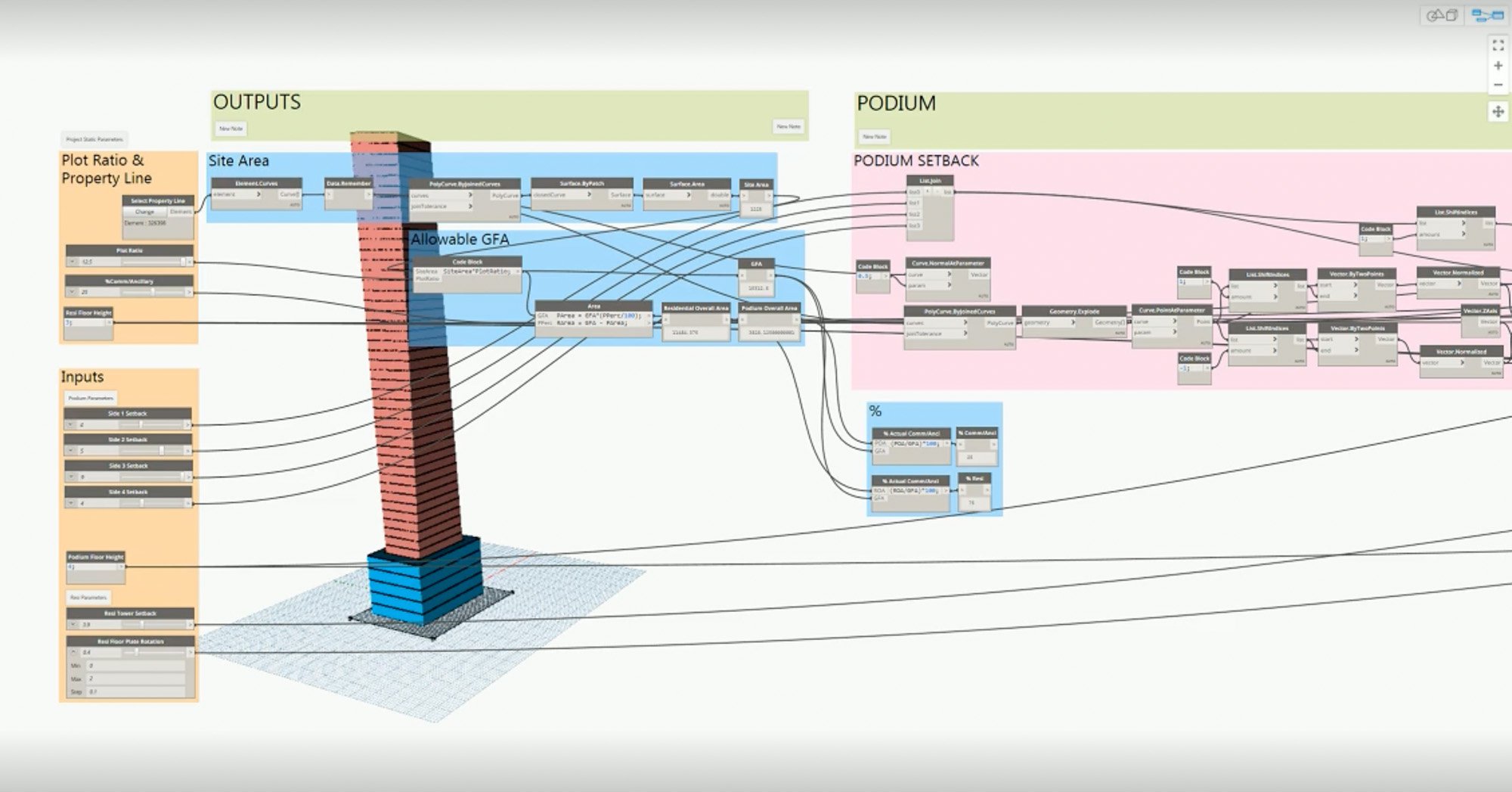
Future
Harnessing AI in the Modelling of Built Spaces
April 17, 2023
AI and Human Behaviour
Artificial intelligence and machine learning have been working their way into most major industries. Social media and Big Data started the ball rolling with their ever-changing content algorithms and of late, we see the influence of AI in healthcare, infrastructure, and digital art.
Studies have shown that optimised machine learning software can be programmed to analyse different vulnerabilities in human behaviour as well as ways in which to take advantage of those weak points.
AI is programmed to learn human behaviour - that is the essence of the concept. It is a careful simulation of human intelligence that seeks to collect data on human behaviour, analyse patterns and utilize those patterns to solve problems.
Industry innovators have sought to take this a few steps further by implementing behavioural psychology concepts to influence human behaviour using AI.
Studies have shown that optimised machine learning software can be programmed to analyse different vulnerabilities in human behaviour as well as ways in which to take advantage of those weak points.
AI is programmed to learn human behaviour - that is the essence of the concept. It is a careful simulation of human intelligence that seeks to collect data on human behaviour, analyse patterns and utilize those patterns to solve problems.
Industry innovators have sought to take this a few steps further by implementing behavioural psychology concepts to influence human behaviour using AI.
Various governments, most recently those of Singapore and Australia, have conducted social and technological experiments that confirm AI’s ability to manipulate human behaviour to a not insignificant extent.
Beyond the contentious implications of a machine-influenced society though, there are also many more practical uses for AI technology and its abilities. AI-driven cars, for instance, make use of data on traffic flow, local traffic laws, and typical pedestrian behaviours to simulate the driving patterns of a licensed and competent human driver.
Plenty of enterprising industries have also taken the progressive stance of applying AI to business, the most prominent of which is Big Data. Companies like Facebook, Twitter, and TikTok are controversially known for running user data through AI and algorithms to maximise user engagement and subsequent ad revenue.
Beyond the contentious implications of a machine-influenced society though, there are also many more practical uses for AI technology and its abilities. AI-driven cars, for instance, make use of data on traffic flow, local traffic laws, and typical pedestrian behaviours to simulate the driving patterns of a licensed and competent human driver.
Plenty of enterprising industries have also taken the progressive stance of applying AI to business, the most prominent of which is Big Data. Companies like Facebook, Twitter, and TikTok are controversially known for running user data through AI and algorithms to maximise user engagement and subsequent ad revenue.
AI and the Built Environment
AI has also started making forays into the architecture, engineering, and construction (AEC) industry. What exactly does AI mean for the AEC industry and how will it be affected by the rise of AI?
The construction industry has seen an increase in its use of artificial intelligence. Market research done by Morder Intelligence predicts a 33.87% compound annual growth rate for artificial intelligence in the construction market between 2022 and 2027, with its fastest-growing market being the Asia Pacific region. By 2030, Market Research Future forecasts that AI in the construction industry will attain a value of USD 2.5 billion.
The construction industry has seen an increase in its use of artificial intelligence. Market research done by Morder Intelligence predicts a 33.87% compound annual growth rate for artificial intelligence in the construction market between 2022 and 2027, with its fastest-growing market being the Asia Pacific region. By 2030, Market Research Future forecasts that AI in the construction industry will attain a value of USD 2.5 billion.
The projected numbers are promising. But shifting our focus back to the present, we find that AEC’s most recent technological advancement is its implementation of Integrated Digital Delivery (IDD).
The focus of IDD is the utilisation of digital technologies to maximise the efficiency of a project’s implementation, construction, and delivery. It covers four key phases: Digital Design, Digital Fabrication, Digital Construction, and Digital Asset Delivery and Management. AI has the potential to have key roles in each of these phases.
The focus of IDD is the utilisation of digital technologies to maximise the efficiency of a project’s implementation, construction, and delivery. It covers four key phases: Digital Design, Digital Fabrication, Digital Construction, and Digital Asset Delivery and Management. AI has the potential to have key roles in each of these phases.

Real-World Applications
In terms of designing digitally, machine learning has been utilised in industry-standard BIM programs for quite some time. Based on set parameters and preliminary measurements, specialised pieces of software can produce construction-grade drawings of mechanical, electrical, plumbing, and structural systems as well as detailed architectural elements.
And although it is still in its infancy, self-generating floorplan technology is in the works. The computational design concept is being developed with the hopes of automatically generating building floor plans and spatial configurations using machine learning and neural networks.
ARB RIBA architect Silvio Carta covers the topic extensively in his Harvard Data Science Review-published article, “Self-Organizing Floor Plans”. He references the works of designers such as Erik Swahn, Sean Wallish, and Kyle Steinfeld that all employ generative adversarial neural networks (GAN), bringing the world a few steps closer to computationally-generated realistic floor plans.
And although it is still in its infancy, self-generating floorplan technology is in the works. The computational design concept is being developed with the hopes of automatically generating building floor plans and spatial configurations using machine learning and neural networks.
ARB RIBA architect Silvio Carta covers the topic extensively in his Harvard Data Science Review-published article, “Self-Organizing Floor Plans”. He references the works of designers such as Erik Swahn, Sean Wallish, and Kyle Steinfeld that all employ generative adversarial neural networks (GAN), bringing the world a few steps closer to computationally-generated realistic floor plans.
Off-site digital fabrication and on-site digital construction both benefit from AI in similar ways. Worksites have been utilising AI-optimised construction schedules and progress reports to minimise work delays.
They also use cameras with integrated computer vision to detect and point out code and safety violations. Both efficiency and safety in construction workplaces are maximised with the right use of artificial intelligence-driven tools.
As for digital asset delivery and management, where the aim is real-time monitoring of the operations and maintenance of asset values, we have Smart home and Smart building technologies, BIM-based defect and asset management programs, and Building Management Systems (BMS).
They also use cameras with integrated computer vision to detect and point out code and safety violations. Both efficiency and safety in construction workplaces are maximised with the right use of artificial intelligence-driven tools.
As for digital asset delivery and management, where the aim is real-time monitoring of the operations and maintenance of asset values, we have Smart home and Smart building technologies, BIM-based defect and asset management programs, and Building Management Systems (BMS).
Making Progress
The construction industry is somewhat slow to embrace change. Recently, due to the challenges that arose from the global pandemic, various industries have been forced to speed up their digitalisation, with the AEC industry being one of them.
The best course of action for professionals is to learn and embrace this change. We must understand the practical, logistical, and ethical implications of AI in the construction industry. And instead of being paralysed by the fear that it may replace us, we should let it be our impetus driving better design and construction practices.
It is, at the end of the day, a tool. Our mastery of it is key.
The best course of action for professionals is to learn and embrace this change. We must understand the practical, logistical, and ethical implications of AI in the construction industry. And instead of being paralysed by the fear that it may replace us, we should let it be our impetus driving better design and construction practices.
It is, at the end of the day, a tool. Our mastery of it is key.